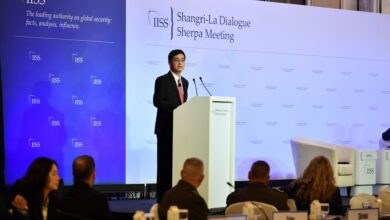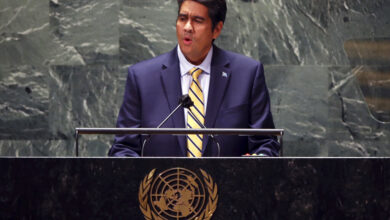PRC suppression of Mongolian language instruction sparks protests, challenges
Thousands of people in the ethnic Mongolian region of northern China have protested the Chinese Communist Party’s (CCP’s) new policy to replace teaching of the Mongolian language in schools with Mandarin.
“We Mongolians are a great race as well,” Dagula, a 39-year-old mother of two, told The New York Times newspaper from her home in the city of Xilinhot in Inner Mongolia. “If we accept teaching in Chinese, our Mongolian language will really die out.”
The mass demonstrations in August and September 2020 involved hundreds of parents and students confronting police and thousands of students boycotting classes, according to Agence France-Presse.
“There are at least tens of thousands of people protesting across Inner Mongolia,” Baatar, a 27-year old herder in Hinggan League, told the news agency September 1, declining to provide his full name for his security.
The language program, announced several months ago, has drawn anger and defiance because many Mongols see it as the last barrier in the decadeslong fight to keep their culture from being erased, Enghebatu Togochog, director of the Southern Mongolian Human Rights Information Center in New York, told the Los Angeles Times newspaper.
“Mongolians feel that language, the last stronghold of their national identity, is about to be wiped out by this new policy,” Togochog said. “That’s why Mongolians feel urgency: If we lose this, we lose everything. We cease to exist.”
The policy is part of the CCP’s aggressive moves under General Secretary Xi Jinping to assimilate minority cultures, most prominently seen in its crackdown on the Uighurs in Xinjiang, MSNBC reported. Ethnic Han make up more than 91% of China’s population.
Analysts contend the policy closely resembles similar measures implemented in Tibet and Xinjiang, where the CCP replaced ethnic minority languages with Mandarin in almost all schools, MSNBC reported. Before Xi’s rise, the CCP allowed ethnic minorities a level of autonomy that enabled them to preserve their cultures and languages, which are supposed to be protected by the PRC constitution.
Xi has sought to standardize national education to promote loyalty to the People’s Republic of China and the CCP.
Inner Mongolian educational authorities defended the policy changes in a statement, saying they “reflect the will of the Party and nation … and the inherent excellence of Chinese culture and advances to human civilization,” according to Reuters.
“Mastering the national spoken and written language is the responsibility and obligation of every Chinese citizen. It is a concrete manifestation of love for the party and country,” the state-run Inner Mongolia Daily said in early September.
The state-run Global Times newspaper website posted a “clarification” September 7 stating that “the new regulation doesn’t signal a cancellation of classes taught in the Mongolian language, nor does it mean the end of preferable policies aimed at helping ethnic minority students get into college.”
Such statements did little to assuage protesters’ concerns, as demonstrations continued into mid-September. (Pictured:Demonstrators in Ulaanbaatar, Mongolia, in September 2020 protest the Chinese Communist Party’s changes to school curriculums that remove or diminish use of the Mongolian language.)
Agence France-Presse reported that Inner Mongolia is the only region remaining worldwide that uses the traditional Mongolian script, which is derived from the old Uighur alphabet. Mongolia adopted the Cyrillic alphabet under the influence of the former Soviet Union, but it has recently enacted policies to increase the use of traditional script in government.
Inner Mongolia ethnic minority schools have used a bilingual curriculum for decades, featuring a range of subjects taught in Mongolian and Mandarin, as well as English and Korean, according to Agence France-Presse.
Roughly 6 million Mongols live in China, twice the number living in Mongolia, according to 2010 census figures. Within Inner Mongolia, Mongols comprise about 18% of the population, according to the Los Angeles Times.




